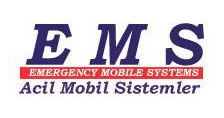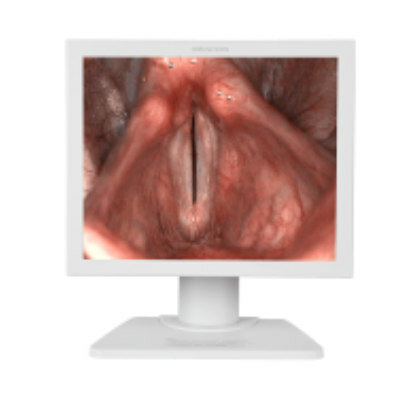Hyperbaric Oxygen Ameliorates Alzheimer's Disease
|
By HospiMedica International staff writers Posted on 18 Dec 2017 |

Image: A new study suggests hyperbaric chambers may help Alzheimer’s treatment (Photo courtesy of RiverView Health).
A new study reveals that hyperbaric oxygen treatment (HBOT) may alleviate symptoms experienced by patients with Alzheimer's disease (AD).
Researchers at Tel Aviv University (TAU; Israel) and Assaf Harofeh Medical Center (Tel Aviv, Israel) conducted a mouse model study of AD that exposed old triple-transgenic (3xTg) and non-transgenic mice (controls) to HBOT in a custom-made hyperbaric chamber suitable for small animals. The mice then underwent HBOT for one hour per day for a period of 14 days, following which they underwent a series of behavioral, histological, and biochemical analyses to examine how the pathological hallmarks associated with AD were affected by HBOT.
The results showed that HBOT reduced behavioral deficiencies in 3xTg mice, reduced plaque pathology by 40%, and reduced neuroinflammatory processes by reducing astrogliosis, microgliosis, and secretion of proi-nflammatory cytokines, while increasing expression of anti-inflammatory cytokines. HBOT also reduced hypoxia, amyloid burden, and tau phosphorylation in the 3xTg mice. The researchers are now testing the effectiveness of HBOT on an additional mouse model of AD to investigate the mechanisms underlying its impact on the disease. The study was published on October 20, 2017, in Neurobiology of Aging.
“Oxygen treatment is a well-tolerated and safe therapy used in clinics around the world for various medical conditions, including neurological disorders,” said lead author PhD student Ronit Shapira, MSc, of TAU . “Although further research is needed to elucidate the underlying beneficial mechanisms of the therapy and to evaluate its beneficial effects in various Alzheimer patient populations, it holds great potential for the treatment of Alzheimer's disease.”
“This revolutionary treatment for Alzheimer's disease uses a hyperbaric oxygen chamber, which has been shown in the past to be extremely effective in treating wounds that were slow to heal,” said senior author Professor Uri Ashery, PhD, of TAU. “Hyperbaric oxygen therapy can actually improve the pathology of Alzheimer's disease and correct behavioral deficits associated with the disease. The main challenge in human use will be to initiate the treatment at early stages, before significant amount of brain tissue is lost.”
HBOT involves 100% pure oxygen delivered to a patient at atmospheric pressure three times higher than normal air pressure in an enclosed chamber. At those pressures, the body is able to incorporate more oxygen into blood cells, blood plasma, cerebral-spinal, and other bodily fluids; the increased oxygen absorption significantly enhances the body’s ability to aid in its own healing. In 1937 hyperbaric oxygen treatments were first used for decompression sickness, but it was not until 1956 that HBOT was used as a therapeutic aid in cardiopulmonary surgery.
Related Links:
Tel Aviv University
Assaf Harofeh Medical Center
Researchers at Tel Aviv University (TAU; Israel) and Assaf Harofeh Medical Center (Tel Aviv, Israel) conducted a mouse model study of AD that exposed old triple-transgenic (3xTg) and non-transgenic mice (controls) to HBOT in a custom-made hyperbaric chamber suitable for small animals. The mice then underwent HBOT for one hour per day for a period of 14 days, following which they underwent a series of behavioral, histological, and biochemical analyses to examine how the pathological hallmarks associated with AD were affected by HBOT.
The results showed that HBOT reduced behavioral deficiencies in 3xTg mice, reduced plaque pathology by 40%, and reduced neuroinflammatory processes by reducing astrogliosis, microgliosis, and secretion of proi-nflammatory cytokines, while increasing expression of anti-inflammatory cytokines. HBOT also reduced hypoxia, amyloid burden, and tau phosphorylation in the 3xTg mice. The researchers are now testing the effectiveness of HBOT on an additional mouse model of AD to investigate the mechanisms underlying its impact on the disease. The study was published on October 20, 2017, in Neurobiology of Aging.
“Oxygen treatment is a well-tolerated and safe therapy used in clinics around the world for various medical conditions, including neurological disorders,” said lead author PhD student Ronit Shapira, MSc, of TAU . “Although further research is needed to elucidate the underlying beneficial mechanisms of the therapy and to evaluate its beneficial effects in various Alzheimer patient populations, it holds great potential for the treatment of Alzheimer's disease.”
“This revolutionary treatment for Alzheimer's disease uses a hyperbaric oxygen chamber, which has been shown in the past to be extremely effective in treating wounds that were slow to heal,” said senior author Professor Uri Ashery, PhD, of TAU. “Hyperbaric oxygen therapy can actually improve the pathology of Alzheimer's disease and correct behavioral deficits associated with the disease. The main challenge in human use will be to initiate the treatment at early stages, before significant amount of brain tissue is lost.”
HBOT involves 100% pure oxygen delivered to a patient at atmospheric pressure three times higher than normal air pressure in an enclosed chamber. At those pressures, the body is able to incorporate more oxygen into blood cells, blood plasma, cerebral-spinal, and other bodily fluids; the increased oxygen absorption significantly enhances the body’s ability to aid in its own healing. In 1937 hyperbaric oxygen treatments were first used for decompression sickness, but it was not until 1956 that HBOT was used as a therapeutic aid in cardiopulmonary surgery.
Related Links:
Tel Aviv University
Assaf Harofeh Medical Center
Latest Critical Care News
- Ingestible Capsule Monitors Intestinal Inflammation
- Wireless Implantable Sensor Enables Continuous Endoleak Monitoring
- Pulse Oximeter Index Offers Non-Invasive Guides for Fluid Therapy
- Wearable Patch for Early Skin Cancer Detection to Reduce Unnecessary Biopsies
- 'Universal' Kidney to Match Any Blood Type
- Light-Based Technology to Measure Brain Blood Flow Could Diagnose Stroke and TBI
- AI Heart Attack Risk Assessment Tool Outperforms Existing Methods
- Smartphone Imaging System Enables Early Oral Cancer Detection
- Swallowable Pill-Sized Bioprinter Treats GI Tract Injuries

- Personalized Brain “Pacemakers” Could Help Patients with Hard-To-Treat Epilepsy
- Microscopic DNA Flower Robots to Enable Precision Medicine Delivery
- Origami Robots to Deliver Medicine Less Invasively and More Effectively
- Improved Cough-Detection Technology Aids Health Monitoring
- AI Identifies Children in ER Likely to Develop Sepsis Within 48 Hours
- New Radiofrequency Therapy Slows Glioblastoma Growth
- Battery-Free Wireless Multi-Sensing Platform Revolutionizes Pressure Injury Detection
Channels
Surgical Techniques
view channel
Robotic Assistant Delivers Ultra-Precision Injections with Rapid Setup Times
Age-related macular degeneration (AMD) is a leading cause of blindness worldwide, affecting nearly 200 million people, a figure expected to rise to 280 million by 2040. Current treatment involves doctors... Read more
Minimally Invasive Endoscopic Surgery Improves Severe Stroke Outcomes
Intracerebral hemorrhage, a type of stroke caused by bleeding deep within the brain, remains one of the most challenging neurological emergencies to treat. Accounting for about 15% of all strokes, it carries... Read morePatient Care
view channel
Revolutionary Automatic IV-Line Flushing Device to Enhance Infusion Care
More than 80% of in-hospital patients receive intravenous (IV) therapy. Every dose of IV medicine delivered in a small volume (<250 mL) infusion bag should be followed by subsequent flushing to ensure... Read more
VR Training Tool Combats Contamination of Portable Medical Equipment
Healthcare-associated infections (HAIs) impact one in every 31 patients, cause nearly 100,000 deaths each year, and cost USD 28.4 billion in direct medical expenses. Notably, up to 75% of these infections... Read more
Portable Biosensor Platform to Reduce Hospital-Acquired Infections
Approximately 4 million patients in the European Union acquire healthcare-associated infections (HAIs) or nosocomial infections each year, with around 37,000 deaths directly resulting from these infections,... Read moreFirst-Of-Its-Kind Portable Germicidal Light Technology Disinfects High-Touch Clinical Surfaces in Seconds
Reducing healthcare-acquired infections (HAIs) remains a pressing issue within global healthcare systems. In the United States alone, 1.7 million patients contract HAIs annually, leading to approximately... Read moreHealth IT
view channel
Printable Molecule-Selective Nanoparticles Enable Mass Production of Wearable Biosensors
The future of medicine is likely to focus on the personalization of healthcare—understanding exactly what an individual requires and delivering the appropriate combination of nutrients, metabolites, and... Read moreBusiness
view channel
Philips and Masimo Partner to Advance Patient Monitoring Measurement Technologies
Royal Philips (Amsterdam, Netherlands) and Masimo (Irvine, California, USA) have renewed their multi-year strategic collaboration, combining Philips’ expertise in patient monitoring with Masimo’s noninvasive... Read more
B. Braun Acquires Digital Microsurgery Company True Digital Surgery
The high-end microsurgery market in neurosurgery, spine, and ENT is undergoing a significant transformation. Traditional analog microscopes are giving way to digital exoscopes, which provide improved visualization,... Read more
CMEF 2025 to Promote Holistic and High-Quality Development of Medical and Health Industry
The 92nd China International Medical Equipment Fair (CMEF 2025) Autumn Exhibition is scheduled to be held from September 26 to 29 at the China Import and Export Fair Complex (Canton Fair Complex) in Guangzhou.... Read more







.jpg)





